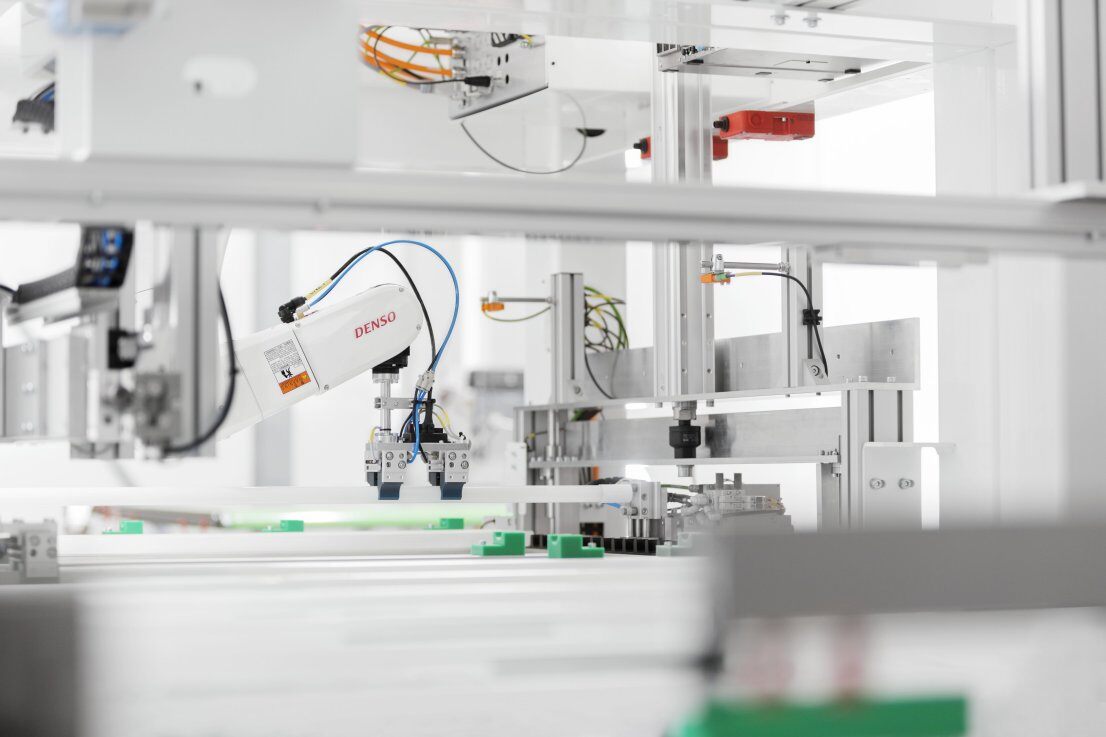One of the most valuable benefits of a modular microfactory is the agile delivery process. It can provide you with ~30% faster deployment time and drastically lower investment costs and risks than a customized automation solution. This blog describes the microfactory delivery process and its advantages.
When manufacturers switch from a traditional custom-automation project to a microfactory, they are surprised about its fast deployment time. Our customers have gained up to 30% faster deployment times with a microfactory solution than compared to an estimated deployment time of a similar traditional customized automation solution. Such a feat, however, requires a thought-through, field-proven delivery process. Here’s a rundown of our six-step microfactory delivery process!
Microfactory Delivery Process
.png?width=1600&height=400&name=microfactory%20delivery%20process%20flow%20(1).png)
1. Manufacturing Process Analysis
The delivery process starts with a thorough manufacturing process analysis. The current manufacturing process is analyzed, and further optimizations are proposed to increase efficiency and quality. We always consider products and processes hand in hand to create the best possible design for manufacturing and assembly (DFMA).
2. Automation Design
An optimal automation design is always a combination of two things. You must know the latest technologies and methods inside out and have in-depth and hands-on design experience. We always put our complete expertise and experience in the game when designing automation for our microfactory customers. Typically, this involves refining customer’s production requirements, creating new streamlined processes from scratch, or updating existing processes. The aim is to find the best possible solution for your needs while avoiding sub-optimal compromises.
3. Pre-assembly and Testing
In the pre-assembly and testing phase, we build the designed microfactory solution at our production facilities from the ground up using the specified equipment, software, interfaces, and protocols. The pre-assembled system is a full (100%) copy of the production system deployed at your site. All the machines are thoroughly tested during the factory acceptance test (FAT). Shipping of the microfactory to the end site takes place only after the customer’s acceptance and approval.
4. On-site Installation and Ramp-up
After the microfactory is successfully shipped, our field deployment team installs and ramps it up at your premises. Thanks to our thoroughly planned delivery process, modularized platform, and standardized interfaces, the on-site microfactory installation time is typically very short, even just one day. The installation time, however, is highly dependent on the system's complexity.
5. Training
Upon complete installation and ramp-up, your production staff is trained to operate and maintain the microfactory. The detailed instructions and user-friendly graphical user interfaces (GUI) make operating the ANT Plant microfactory intuitive and easy for professionals.
6. Maintenance and Optimization
Despite being a fully accepted and commercially operational plant, the microfactory delivery process hasn’t stopped yet. As with any automation system, maintenance and optimization are continuous processes. Our service team remains within your reach throughout the operational life cycle, takes care of maintenance, and helps you to optimize the process. This allows you to concentrate on developing products and growing your business. The maintenance service includes a full-time warranty, scheduled services, spare parts, 24/7 remote support availability, and on-site visits when needed.

Microfactory vs. Customized Automation Solution – Comparing Delivery Processes
Why is the microfactory delivery process faster, less costly, and less risky than a custom solution? In a modular microfactory, both a single cell and the entire line are modular. The production line consists of modules, each with its pre-tested application(s). The interfaces between the modules are standardized and precise, making combining modules easy. This minimizes installation time at the production site and reduces costs significantly.
In a modular microfactory delivery process, the basic modules can be ordered right at the beginning of the project. This speeds up the delivery process because the assembly can be started although the design is still in progress. Thus, the workload is more evenly distributed across the project. In a traditional custom automation project, parts can be ordered only after completing the design.
A modular microfactory is assembled from main modules and connecting them at the production site does not require teaching robots and other actuator points separately.
The agile delivery process – with shorter duration, reduced costs, and lower risks – clearly is one of the main microfactory benefits manufacturers most value!
To summarize, the Microfactory delivery process excels in:
1. Speed:- Modular design allows for parallel processes
- Basic modules can be ordered early, even as the design continues
- Standardized interfaces reduce on-site installation times
- Pre-tested applications reduce integration issues
- Shorter installation time lowers on-site labor costs
- Even workload distribution optimizes resource allocation
- Standardized, pre-tested modules minimize compatibility issues
- A simplified assembly process reduces the potential for errors
- No need for extensive on-site robot teaching or actuator point programming
- Modular design at both cell and line levels
- Easy to combine or reconfigure modules as needed
In Conclusion
Based on our experience, the total duration of the microfactory delivery process can be up to 30% shorter than with a traditional custom solution. The onsite ramp-up time in customer premises can be up to 90% faster thanks to the modular system design. Despite the simplicity and fast deployment, microfactory enables high-quality manufacturing.
As you know, each case is unique in the automation world. Find out how much you can save time with a modular microfactory – contact us!
Download eGuide – How to Build a Scalable microfactory?
